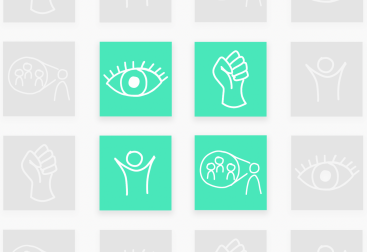As part of the 1st CHIIoT workshop in 2021, I presented a poster about what it means to design with the invisible material that is data.
With the imminent ubiquity of data, the healthcare domain is turning to data to increase efficiency and effectiveness. Health data tracking in everyday life introduces challenges around user protection, data quality, and transparency about data goals. While adhering to GDPR legislation, data design practice has done little to protect users of health tracking tools from their data and associated mental health problems. Additionally, the quantification that many data trackers facilitate can lead to comparison, competition, and addiction. Finally, it can be difficult for users to oversee the consequences of sharing their data in consumer and research contexts.
In this paper (and poster), I argue that designers should take responsibility for data curation and protection when designing with data, especially in healthcare. I also introduce a new breed of designer: the data futures designer, who actively seeks out the edges of data tracking and discusses these with future users to inform them, probe their responses and consequently define the future of data design, together.




